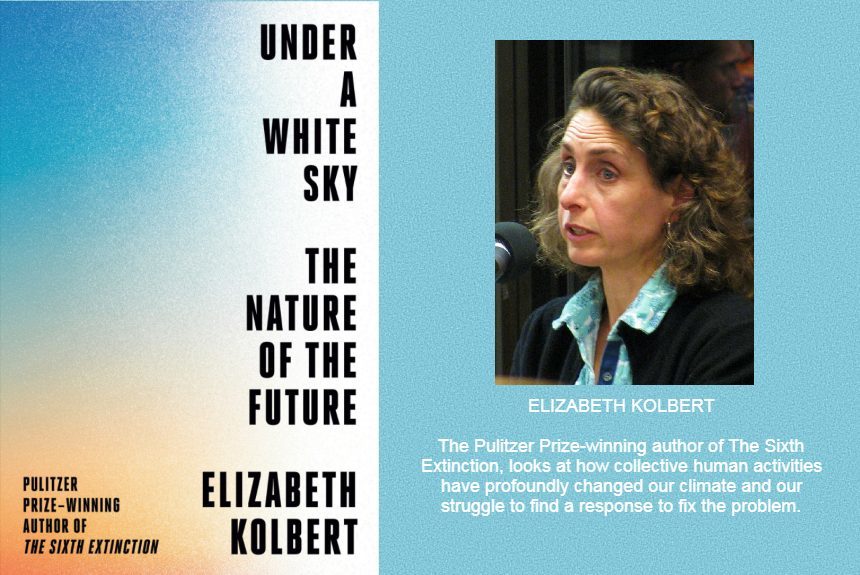“Under a White Sky” is Elizabeth Kolbert’s latest book. Published this year, it helped popularise the term “the Anthropocene,” a description of our current geological era in which human activity is the most influential force behind the changes in our ecosystems.
Kolbert is known for her Pulitzer Prize-winning book, The Sixth Extinction: An Unnatural History, published in 2014. It is a collection of essays describing the mass extinction of the modern era.
As an environmental commentator and a climate reporter for The New Yorker magazine, her books focus on the ecological degradation and climate change crises humans face in the Anthropocene.
The Spinoff article offers an extensive and enthusiastic review of “Under a White Sky,” comparing it with apocalyptic-themed books, fictional works, or those steeped in activism that climate writers often use to influence politics and policy and warn people what could happen if we don’t change our behaviour.
Kolbert’s book is not a work of activism but pure journalism. In The Sixth Extinction, she calmly and objectively describes a global mass extinction that is well underway. In “Under a White Sky”, she gives us a taste of what it is to live in a climate-changed world, a future that is now inescapable, the article says.
She looks at how collective human activities have profoundly changed our climate and our struggle to find a response to fix the problem.
The author revisits familiar materials and travels around the world to meet with scientists trying to preserve the rarest fish, engineers who are turning carbon emissions into stone, researchers who are trying to develop super corals that could adapt to a warming world, and physicists who are planning to shoot particles into the atmosphere to cool the planet.
The book describes how our actions have already significantly altered the natural world. Now, she wrote, humans are trying to intervene again in a million ways to adjust, modify, and correct the natural process that we have mistakenly changed.
The book has three main parts:
- The first part takes the reader to a river faced with managing and controlling massive carp populations, an invasive fish introduced in US rivers. However, it is really about the Chicago River and a bigger story about how everything in the Anthropocene is connected. Interventions done in the past can have consequences that cause problems well into the future, waiting for another intervention to correct them.
- The second part describes Louisiana’s continuous sinking Mississippi River delta, a consequence of the previous century’s huge effort to tame that same river.
- The third section discusses a “geoengineering” attempt to cool the planet, not by reducing fossil fuels but by spraying tiny sunlight reflectors into the atmosphere. The consequences can be alarming.
The book is so valuable and compelling because it tells the readers how we have gone too far in changing a perfectly balanced nature and how far we need to go to fix this balance to ensure that life can still exist in our planet’s future, the article said.
Sources
Frank, Adam. (2021, February 8). ‘Under A White Sky’ Examines What It Might Take For Humans To Continue To Exist. NPR. Retrieved from https://www.npr.org/2021/02/08/965306203/under-a-white-sky-examines-what-it-might-take-for-humans-to-continue-to-exist.
Mclauchlan, D. (2021, April 14). Systems control: Introducing a new way of thinking about the climate crisis. The Spinoff. Retrieved from https://thespinoff.co.nz/books/14-04-2021/systems-control-introducing-a-new-way-of-thinking-about-the-climate-crisis/
PHOTO CREDIT: Elizabeth Kolbert’s photo by Slowking – Own work, GFDL 1.2, https://commons.wikimedia.org/w/index.php?curid=31345897



Leave a Reply